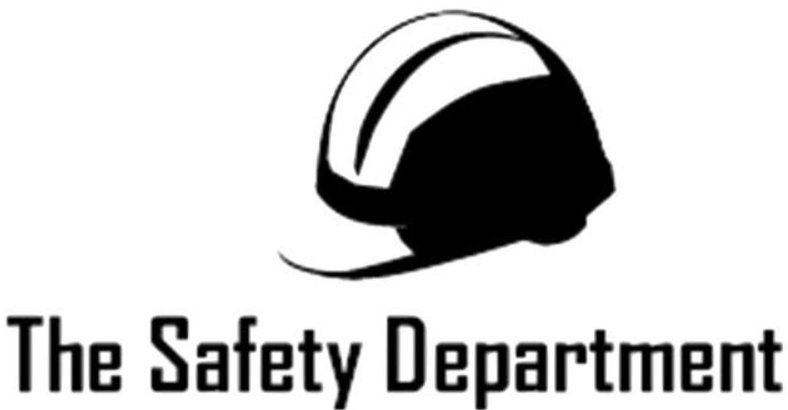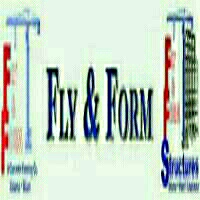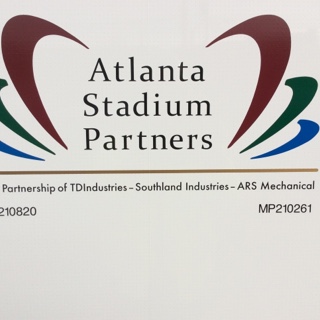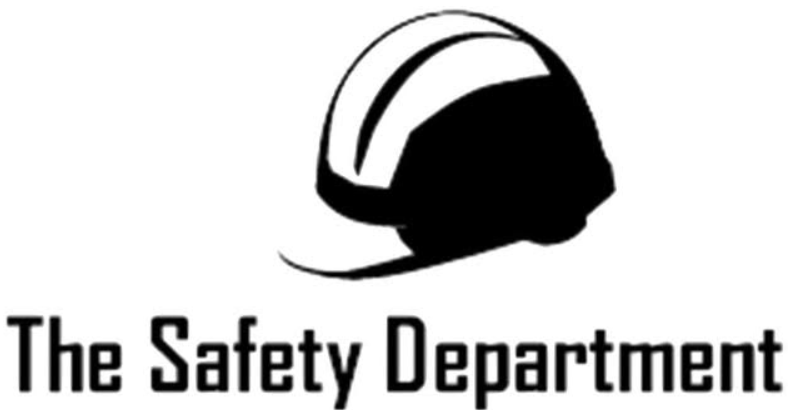Title Page
-
Project Name & Number
-
Conducted on
-
Location
-
Document No. leave blank to autofill.
Project Team
-
Project Manager
-
Site Manager
-
Number of Operatives on Site
Signatures and Comments
-
Site Representatives Signature
-
Auditors Signature
-
Auditors Comments / Remarks
Section 1 - Welfare Facilities and Site Set Up
1.1 Accident and Incident Reporting
-
Has there been any AINM? Have they been recorded & closed out? All actions communicated to all on site?
1.2 Housekeeping
-
Site is Tidy, Waste is managed, Walkways are clearly marked and free of Slip, Trip hazards. Emergency escape routes are free of obstructions. Suitable storage areas provided and used.
1.3 Lighting
-
Suitable light levels across the site.
1.4 Fire Safety
-
A fire and emergency plan is in place and communicated. Fire safety controls are in place such as: means to raise the alarm, portable fire extinguishers, escape route signage, fire resisting wall and floor protection materials and smoke control e.g. Fire doors in place.
1.5 Security and Access
-
The site is suitably controlled to ensure there is no unauthorised access and site activities cannot harm members of the public. Delivery routes are separated where appropriate.
1.6 First Aid
-
Adequate arrangements for dealing with injuries are in place including trained First Aiders, well stocked first aid boxes and information on what to do in the event of an accident.
1.7 Signs and Notices
-
Health and safety notices and information is displayed on site notice boards or other appropriate locations on site.
1.8 Welfare
-
1.8.1 Adequate toilet, changing and washing facilities are provided in a safe area
-
1.8.2 An area for eating and drinking has been provided away from work activities (well ventilated and separated by temporary or permanent walls and doors on large projects) with suitable chairs and tables. Drinking water and means to heat water / food has been provided. Rest areas are clean, tidy and facilities are in good condition.
-
1.8.3 A site office has been set up in a safe location away from work activities.
Section 2 - Health, Safety and Environmental Management
2.1 Safety Plan and Risk Assessment
-
2.1.1 A construction Phase Health and Safety Plan has been shared with contractors and contractor tasks are subject to suitable and sufficient risk assessment. A Temporary Works Register is available (where required).
-
2.1.2 RAMS are signed as read and understood sub-contractors RAMS are subject to review and amendments have been made when necessary.
2.2 Daily Briefings
-
2.2.1 Daily meetings involving all parties working on site include details of hazardous work taking place and relevant control measures.
2.3 Permit to Work (PTW)
-
2.3.1 All high-risk works are controlled with use of a PTW, including: hot works, electrical isolations, scaffolding installation / striking or mechanical access, work at height, etc.
2.4 Inductions
-
2.4.1 All persons on site have received a safety induction.
-
2.4.2 Training records are kept on site and are valid and in date.
2.5 Environment
-
2.5.1 Controls against pollution of air, ground or water systems are in place including drain protection and spill kits where required.
-
2.5.2 Arrangements are in place to reuse or recycle waste wherever possible. A licensed waste contractor has been appointed and waste transfer notes are available.
-
2.5.3 Controls are in place to reduce or mitigate generation of construction dust or paint fumes on and off site.
-
2.5.4 Ecologist report has been received and appropriate actions taken in line with the report.
-
2.5.6 Dust Controls are in place to limit exposure to dust.
Section 3 - Tasks and Equipment
3.1 Work at Height
-
3.1.1 Access equipment on site is suitable for the task and duration of work. Ladders are only used for short duration and access.
-
3.1.2 Access equipment is in good condition (visual assessment) and evidence is available that it is regularly inspected.
-
3.1.3 Individuals have been briefed on a risk assessment and have received any specific training required.
-
3.1.4 Suitable edge protection has been provided for work platforms and controls are in place for potential fall of materials from height.
-
3.1.5 Scaffolding Design as per TG20:21 or a design is in place and recorded on the Temporary Works Register.
3.2 Work with Electrical Systems or Electrical Equipment
-
3.2.1 Electrical systems are isolated and tested for dead prior to work commencing using a Permit to Work.
-
3.2.2 Electrical equipment is in good condition (visual) and evidence is available demonstrating regular test and inspection.
-
3.2.3 Low voltage electrical equipment is used if possible (e.g., 110v in the UK).
3.3 Lifting Equipment and Mechanical Handling
-
3.3.1 Plant and equipment for lifting and moving heavy loads is in good working order (visual) and there is evidence of test and inspection where appropriate.
-
3.3.2 Lifting Plan is in place and signed off (if applicable).
3.4 Asbestos
-
3.4.1 Information regarding the presence of Asbestos or Asbestos Containing Materials (ACMs) is available. Asbestos Register/Survey available.
-
3.4.2 Known ACMs are in good condition with no fibre release. Suitable controls are in place for the management of ACMs.
-
3.4.2 Asbestos work is being completed safely in compliance with the written plan of works.
3.5 Plant and Equipment
-
3.5.1 Guards / safety devices are in place to prevent injury from moving parts of drills, saws, abrasive wheels, and cartridge tools. Emergency stop buttons available and functional for any hazardous equipment.
-
3.5.2 Hand Tools are safe, appropriate, well maintained and used correctly.
-
3.5.3 Hand Knives – the risk of cuts has been eliminated or reduced by risk assessment considering retractable blades and cut / puncture resisting gloves and clothing.
-
3.5.4 A Plant and Equipment Register is in place and regular checks completed, PA Testing is in date.
3.6 Personal Protective Equipment (PPE)
-
3.6.1 Requirements in place and adhered to for minimum PPE. Other PPE required for specific tasks / hazards have been provided according to a risk assessment including any Respiratory Protective Equipment (RPE).
3.7 Hand / Arm Vibration (HAVS)
-
3.7.1 Use of any vibrating equipment has been risk assessed to prevent harm from prolonged exposure and HAVS monitoring is completed.
3.8 Manual Handling
-
3.8.1 All loads have been risk assessed to reduce harm from lifting, pulling, pushing or movement of equipment or materials including use of suitable trolleys or team lifts where necessary.
3.9 Noise
-
3.9.1 Any tasks which expose individuals to loud or protracted noise have been risk assessed to prevent hearing damage including consideration of noise protection zones and / or hearing protection.
3.10 Hazardous Substances
-
3.10.1 Hazardous substances are used, stored, transported, and disposed of in the safest way possible.
-
3.10.2 CoSHH assessments are on site and available along with the relevant fire, first aid and environmental equipment.
3.11 Excavations
-
3.11.1 Buried Services are identified and marked out, service plans are available and service detection equipment is being used.
-
3.11.2 Appropriate plant / equipment is being used and is in good condition with relevant checks and inspections in date.
-
3.11.3 All excavations are supported or battered back sufficiently where there is a risk of collapse.
-
3.11.4 Adequate edge protection is in place.
Section 4 - Management
-
4.1 Are personnel put to work safely - Safe starts, pre start-check/inspections, permits, signing in, etc
-
4.2 Project / Client Specific Requirements: Have all the clients specific requirements for this project been identified and complied with?
-
4.3 There is adequate supervision for all site activities.
Section 5 - Close out
-
5.1 All items picked up on the previous report have been appropriately actioned
Supply Chain
-
Is work Sub-Contracted?
-
Contractor 1
-
Contractor 2
-
Contractor 3
-
Contractor 4
-
Contractor 5
-
Contractor 6
-
Other Contractors Including Client Direct Works?
Edmont Employees
-
Employee 1 Name
-
Performance on site
-
Employee 2 Name
-
Performance on site
-
Employee 3 Name
-
Performance on site
-
Employee 4 Name
-
Performance on site
-
Employee 5 Name
-
Performance on site
-
Employee 6 Name
-
Performance on site
-
Employee 7 Name
-
Performance on site
-
Employee 8 Name
-
Performance on site
-
Employee 9 Name
-
Performance on site
-
Employee 10 Name
-
Performance on site
Guideline to the Scoring Matrix
-
Guide to Scoring
10 = "Best Practice" approach to H&S. Going above and beyond company policy, taking initiative.
9 = Meets Company Policy
7-8 = Low Risk / Minor Concerns
4-6 = Medium Risk / Action Required
1-3 = High Risk / Immediate Action Required
90%-100% Excellent approach to health and safety
80%-90% Good safe systems of work and meets company expectations
70%-80% A better proactive approach to H&S required
<70% Standards below company requirements













